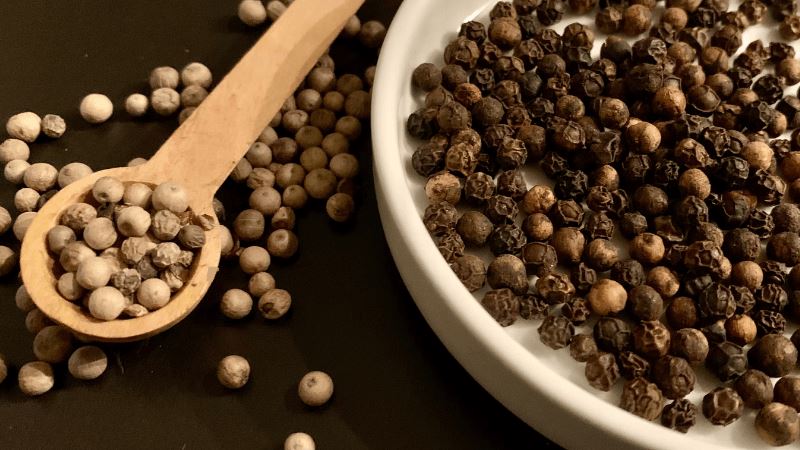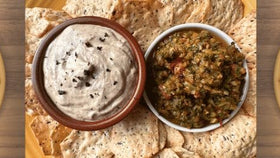What is the Difference Between Black and White Peppercorns
White vs Black Peppercorns
There are so many peppercorn varieties out there, from black and white to green and red and a multitude of other types named for their position on the color spectrum; but is it merely color that separates the individual peppercorns, or are there other unique elements that set them apart? Let’s find out!
Well, first we must decipher between the peppercorn varieties. We are not going to even consider the pink peppercorn because it isn’t a true peppercorn at all but actually comes from a variety of rose plant. So let's look at the true peppercorns. You might be surprised to find out that they all come from the same plant, the Piper Nigrum, or black pepper plant. Furthermore, they aren’t even different parts of the same plant. Red, green, black, and white peppercorns are all the same seeds from the same plant. The difference is found only in the way they are processed, the way they taste, and their associated aroma.
Green and black peppercorns are actually picked at the same time, when they are still green and not fully ripe. It’s only after they are picked that the preservation process alters between the two. Black peppercorns are sun-dried, allowing oxidization to occur and turning them black, whereas green peppercorns must be preserved by brining, freeze-drying, or dehydrating (not via the sun). Had these green peppercorns been left on the vine to ripen, they would have turned red. As you can imagine, that is where the red peppercorn came from. Red peppercorns are most often found in brines or dehydrated. Next up, the prized white peppercorn. Like the green and black, the red and white peppercorns are also picked at the same stage of ripeness. The difference is that the hull has been removed from the white peppercorn, exposing a white interior.
But, we imagine what you are really wondering is in regards to the flavor, spice, and aroma differences are between black peppercorns and white peppercorns, so we’ve addressed the varying properties and profiles of each, as well as the best applications based on their individual traits.
We put white and black peppercorns head-to-head and here is what we discovered:
Flavor of black and white peppercorns
The pepper flavor you are probably most familiar with is that of the black peppercorn. It is mild in terms of heat levels, whereas white peppercorns tend to pack a bit more of a punch in relation to spiciness. When it comes to other flavor properties, it is the white peppercorn that takes its seat at the conservative table, with earthy undertones, delicate floral notes, and a somewhat musty aroma. Black peppercorns have more concentrated levels of piperine which lends itself to that sharp bite recognizable in black peppercorns.
When to use white vs black peppercorn
Because of the intense flavor profile of black peppercorns, they are often the choice for protein-rich dishes, especially those including red meats, as well as hearty stews and braises. White peppercorns are more typical of Asian and French cuisine, especially dishes in which the preference is to not alter the aesthetic with black flecks of pepper, particularly in white sauces such as a rich and creamy béchamel.







Slofoodgroup
Author